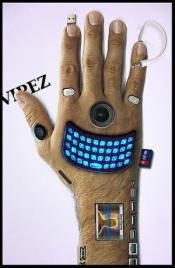Is transhumanism really the world’s most dangerous idea?
By Michael Cook,
Mercatornet
| 07. 20. 2016
In 2004 the editors of the journal Foreign Policy asked several prominent intellectuals to identify the world’s most dangerous idea. Surprisingly political scientist Francis Fukuyama’s choice was transhumanism. He described it as a movement “to liberate the human race from its biological constraints”. Its supporters, he said, want to “wrest their biological destiny from evolution's blind process of random variation and adaptation and move to the next stage as a species”.
Most people would ask, “Are you kidding?” In fact, the transhumanist projects which surface in the media do sound improbable, not to say loopy. Here are three which have been widely reported.
- Elon Musk, the American billionaire boss of Tesla and Space X, recently told a conference of programmers in San Francisco that humans need to augment their brain power with “neural lace”, a fine mesh integrated into the brain which would link the brain directly to the internet. If we fail to keep pace with artificial intelligence, we will become house pets for “ultra-intelligent AI”, he said. “I don’t love the idea of being a house cat,” he...
Related Articles
By Jenny Lange, BioNews | 12.01.2025
A UK toddler with a rare genetic condition was the first person to receive a new gene therapy that appears to halt disease progression.
Oliver, now three years old, has Hunter syndrome, an inherited genetic disorder that leads to physical...
By Grace Won, KQED [with CGS' Katie Hasson] | 12.02.2025
In the U.S., it’s illegal to edit genes in human embryos with the intention of creating a genetically engineered baby. But according to the Wall Street Journal, Bay Area startups are focused on just that. It wouldn’t be the first...
By Pam Belluck and Carl Zimmer, The New York Times | 11.19.2025
Gene-editing therapies offer great hope for treating rare diseases, but they face big hurdles: the tremendous time and resources involved in devising a treatment that might only apply to a small number of patients.
A study published on Wednesday...
Several recent Biopolitical Times posts (1, 2, 3, 4) have called attention to the alarmingly rapid commercialization of “designer baby” technologies: polygenic embryo screening (especially its use to purportedly screen for traits like intelligence), in vitro gametogenesis (lab-made eggs and sperm), and heritable genome editing (also termed embryo editing or reproductive gene editing). Those three, together with artificial wombs, have been dubbed the “Gattaca stack” by Brian Armstrong, CEO of the cryptocurrency company...




